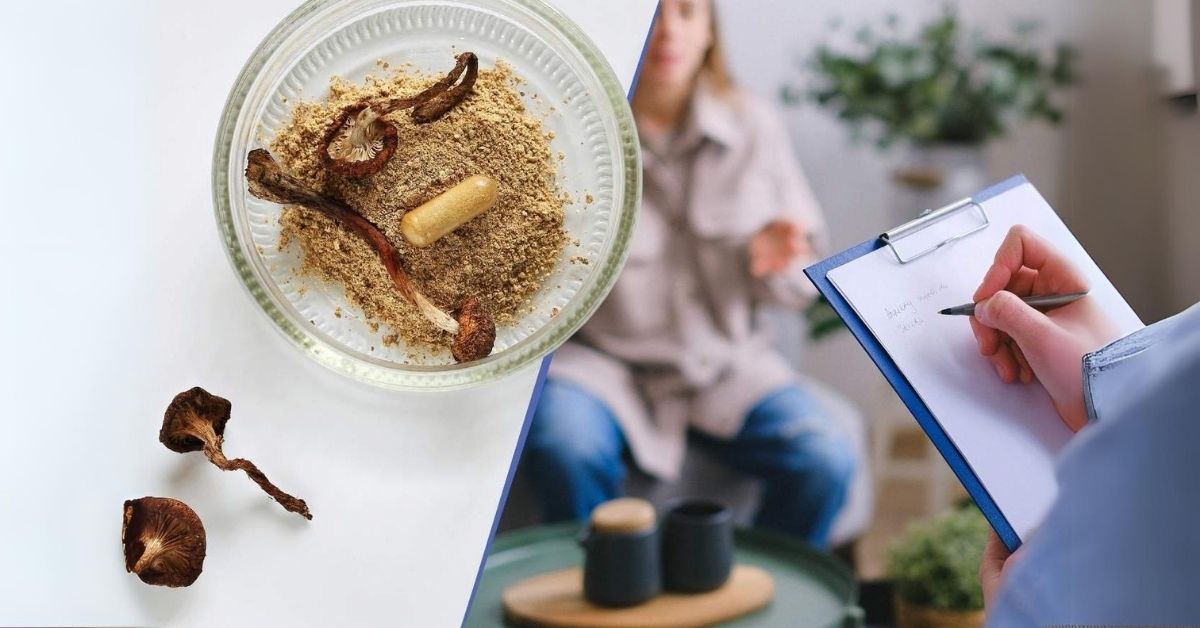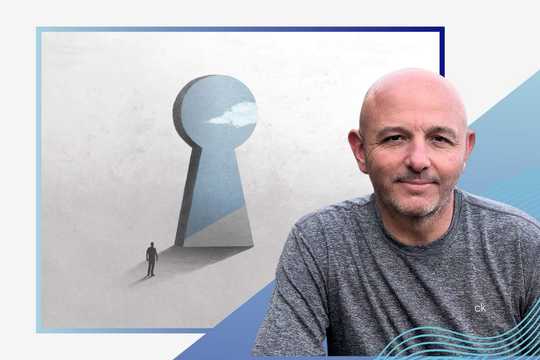In recent years, the exploration of psychedelics for therapeutic purposes has gained considerable attention, both in clinical settings and in popular culture. As a clinical psychologist primarily focusing on cognitive-behavioral interventions, my mission has always been to help individuals achieve greater happiness and well-being. My journey into the realm of psychedelics began in 2021 amid the challenges of the COVID-19 pandemic. While I wasn’t actively seeking alternatives to my existing practice, I consider myself fortunate to have discovered psychedelic-assisted psychotherapy at that time.
“Microdosing aims to produce subtle changes that enhance daily functioning without overtly mind-altering effects.”
— Larry Shapiro, PhD
Patient Population and Clinical Presentations
In my work, I encountered a wide range of clinical presentations, both with and without the integration of microdosing. To be clear, approximately 30% of the people I see are microdosing or have microdosed in the past. My patient population includes:
- Individuals grappling with combat trauma
- First responders
- Survivors of childhood abuse and neglect
- Those with:
- Major depressive disorder
- Obsessive-compulsive disorder (OCD)
- Generalized anxiety disorder (GAD)
- Social phobia
- Individuals navigating life cycle transitions
- Those recovering from narcissistic relationships
A Definition and The Role of Microdosing in Therapy
Microdosing involves administering very low doses of a psychedelic, typically one-tenth to one-twentieth of a typical recreational dose. Unlike a full psychedelic experience, which can significantly alter perception, mood, and cognition, microdosing aims to produce subtle changes that enhance daily functioning without overtly mind-altering effects. Most of my patients are microdosing twice a week only after finding their dose. Many patients experience these changes so subtly that they don’t even recognize them until someone points them out as part of their integration experiences.”
Microdosing and Psilocybin: Essential Reads, Podcasts, and Research
- Psilocybin Mushrooms Are Popular, but What About Psilocybin Microdosing? Read Benefits & Risks
- Looking for Podcast Episodes About Microdosing? Our Top 5 Favorites for You to Tune Into!
- Microdosing Psychedelics: What Do We Know So Far? Learn Where the Research Stands Now.
- What Is Microdosing, and How Does It Work? Let’s Dive into This Trending Practice for Mental Health
Clinical Insights and Reflections
One Size Does Not Fit All: Diverse Approaches to Psychedelic-Assisted Psychotherapy
So far, there’s no evidence that a single therapeutic approach or method for integrating psychedelics is inherently superior to others. During my training, I encountered various treatment modalities, many of which were new to me, along with spiritual concepts that were previously unfamiliar to me. Despite these new experiences, my practice remains firmly rooted in cognitive-behavioral therapy, with an emphasis on behavioral interventions. This approach aligns well with the practical, results-oriented mindset prevalent in the Midwest, where I practice. In the “Show Me State,” CBT’s straightforward and pragmatic aspects resonate with most of my patients. Typically, those who seek me out for psychedelic-assisted psychotherapy begin with a solid foundation in CBT. I sometimes refer to my work as “psychological rehab,” which seems more acceptable to some than the term “psychotherapy.”
The Subtlety of Change: “Everything Changes and Nothing Changes”
One of the first individuals I worked with during microdosing in therapy offered this insightful observation: “Everything changes, and nothing changes.” This phrase has since become a way for me to describe to patients the subtle changes they might experience while microdosing in therapy. Many patients experience these changes so subtly that they don’t even recognize them until someone points them out as part of their integration experiences.
First the Euphoria, Then the Work
Many of my patients report a heightened mood or psychological well-being after the first few doses. When they describe this new positive state, typically, I caution them against attributing it solely to the microdosing in therapy. Instead, I direct their attention to the changes they have already begun to implement in their lives. These changes align with the concept of “partnering with the medicine.” I also emphasize that euphoria, in my opinion, is not the goal of microdosing; instead, the objective is to create an environment in the brain that allows people to consider alternative ways of thinking more easily. In this sense, I believe “psychotherapy assisted by psychedelics” is a far more useful term.
An Absence of Negative Chatter
A common experience among my patients is the disappearance of the chronic negative self-talk that they initially complained about. This absence often goes unnoticed until I point it out. It’s related to the notion that “everything changes and nothing changes.” Some patients express surprise that they hadn’t noticed the absence of negative self-talk or obsessions before someone brought it to their attention. This experience shifts the focus of integration work. Instead of asking patients what they notice, I may ask them to focus on what they no longer notice. The absence of negative chatter then gets reinforced as their behaviors change to match their improved mood and the newfound “head space” that allows them to think more efficiently.
Microdosing Questions Answered: Well-Being, Safety, and Effectiveness
- Is Microdosing the New Mindfulness? Explore This New Frontier in Well-Being
- Learn About Chronic Microdosing: Can It Cause Heart Damage? We Look at Risks and Unknowns
- Can Microdosing Relieve Anxiety Symptoms? From Online Forums to Research Studies: Learn More
- Is Microdosing As Effective As Threshold Doses? Join This Exploration: the Appeal, Science, & Impact
An Absence of Depression Is Not the Same as Happiness
Many of my patients come to me with the desire to reduce or discontinue long-standing SSRI use. I’ve received referrals from psychiatrists who have exhausted their toolkit of options for helping these patients. While SSRIs and SNRIs can be incredibly beneficial for many people, the patients I see are often those for whom these medications have not been effective. SSRIs, in particular, tend to “splint” emotions, primarily with the goal of reducing negative feelings.
Unfortunately, this emotional splinting also prevents the experience of happiness and joy. So, while patients may not feel depressed, they frequently complain of feeling emotionally flat. Adding to their frustration, the sexual side effects of these medications can further inhibit their ability to experience happiness. However, as patients reduce their SSRI doses and maintain an appropriate microdose, many find that they are better able to experience happiness and joy—as well as a more satisfying sex life.
Psychological Safety and Comfort
It is not unusual for individuals curious about integrating psychedelics into and using microdosing in therapy to express apprehension or even fear of the macrodose experience. I hear nervous excitement from them, usually based on what they’ve read or seen in movies or TV. The sub-perceptual nature of microdosing generally puts people at ease. Certainly, after their first dose, they are no longer nervous about the experience but curious about what may come next.
I also believe that microdosing can be a great way to prepare people for a psychedelic experience by easing them into an understanding that they can, in fact, change the way they think and perceive. I find that they are frequently able to approach a psychedelic dose with much more curiosity and less fear.
Sometimes, a Small Change Can Make a Big Difference
This phrase is the tagline for my practice, Quantum Behavioral. Prior to my introduction to psychedelic-assisted psychotherapy, my experience as a therapist suggested that sometimes subtle changes in thinking or behavior can have profound implications for an individual’s self-perception and lifestyle. My training in psychedelic-assisted psychotherapy exposed me exclusively to the benefits of the psychedelic experience.
Talking with classmates who had multiple experiences with psychedelics, as well as reading books and papers at the time, biased my perspective about the need for profound psychedelic experiences to create profound and lasting changes. Now, with a couple of years as a clinician with exposure to both, I am confident that a microdose can make a big difference.
Conclusion: The Need for New Measurement Tools and Paradigms
These are just some of the more obvious observations I’ve made in my practice. I believe there are enough consistencies in these experiences to warrant acknowledgment of something more than a placebo at work. Psychedelics are unique among medicines, and I think we need new measurement tools designed specifically for this unique clinical intervention to assess their utility better.
Additionally, I believe a new paradigm for assessing outcomes in psychedelic research is needed. I am not the first to express this position. Most people familiar with psychedelic research acknowledge that double-blind, placebo-controlled studies are challenging due to the dramatic impact of psychedelics, which can make it difficult to blind both participants and investigators. As such, a non-traditional approach—such as microdosing in therapy—to this non-traditional therapy seems necessary.
In sum, I firmly believe that microdosing can be effective in facilitating change when added to psychotherapy. While I don’t rule out the role of placebo, my clinical observations suggest otherwise. Placebo is undoubtedly powerful, but until we can accurately measure the clinical outcomes of microdosing and psychedelic experiences, it is premature to assign change solely to placebo, just as it is to attribute change solely to the medicine itself.






